

This page last modified: 13 November, 2013 (Tatra 111 added)

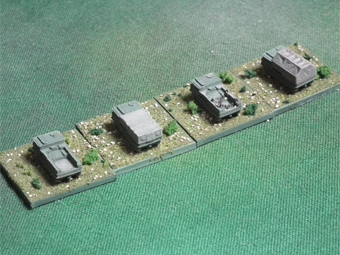
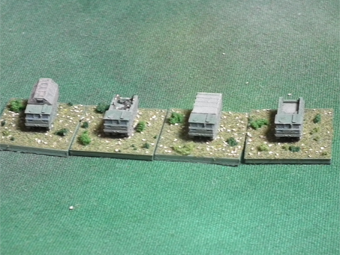
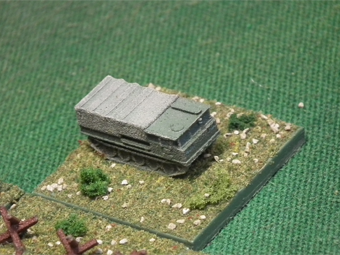
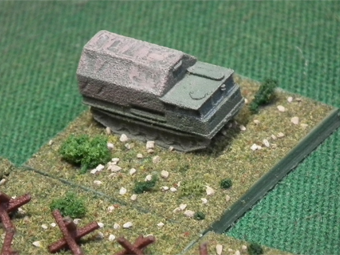
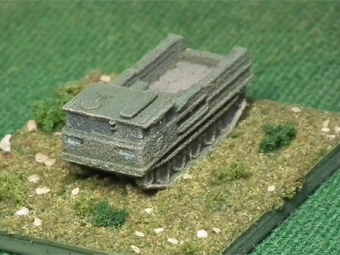
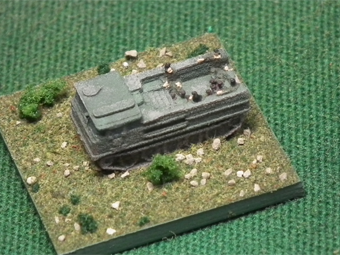
Here are various ATS-59G artillery tractor variants that I made myself and are available via Shapeways - I now have a "shop" there where you should be able to get them. I made these partially to see what 3-d printing is like, and also because nobody makes any medium-sized artillery tractors. Everyone seems to make one or more heavy AT-T variants - I have some myself - but the smaller vehicles seem to get ignored. I was quite pleased with the results, considering these were my first attempt.
As you can see, there are four variants here, two with canvas tops raised (high and low), and two without - one of these has some crewmen lounging in the back - I don't like trucks and tractors that have nothing to go in the back. But at least it's possible for a truck to move around unladen - even worse are models of open-top vehicles like ZSU-57-2s that don't come with any crew. How do they move or fight, then?
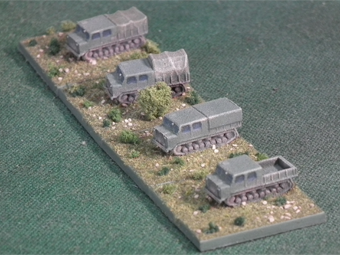

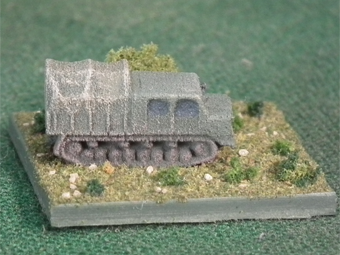
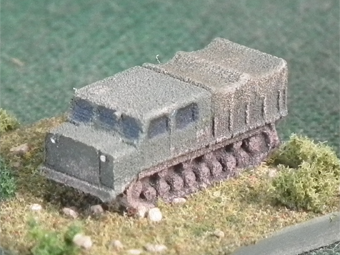
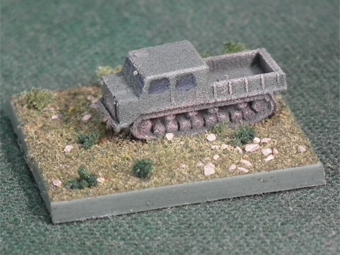
Here are some AT-S artillery tractor variants that are some more of my Shapeways creations. Two have canvas tops raised (high and low, respectively), one is without, and one has a hard top. The AT-S (Artillery Tractor, Small: it works both in English and Russian) was part of a three-vehicle family of Soviet post-war artillery tractors; the medium-sized one was the AT-L, and the big one was the AT-T. The AT-S was replaced by the ATS-59, starting full-scale production in 1959, although production of the AT-S itself didn't cease until 1962. The original ATS-59 had a narrow cab, like of that of the AT-T's, but on a smaller scale; the updated ATS-59G had a full-width cab as shown above. These models are done in the cheapest possible default "white soft flexible" plastic (that's nylon-12 for fellow chemists); I have since discovered the "white soft flexible polished" plastic is only marginally more expensive but gives a much smoother finish.
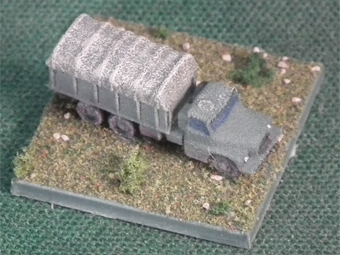
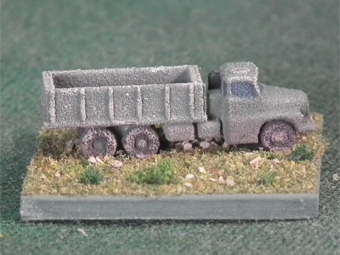
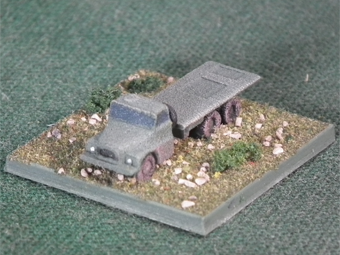
These are various kinds of Tatra 138 6x6 trucks that are also available via my Shapeways shop. On the left, one with a raised tarpaulin or canvas top; in the centre, one without a canvas top; and on the right, one with a plain flatbed - this last one can be used to transport PMS ribbon bridge sections.
Tatra has a long history of innovative vehicle designs, and their heavy trucks feature split axles and tubular backbone for exceptional off-road performance. The T-138 was introduced in the late 50s and continued in production until 1971, when it was replaced by the more powerful T-148. If found use in most WarPac countries, and a few beyond; in addition to basic truck models as shown above, it formed the basis of many specialist vehicles such as the D-031a excavator.
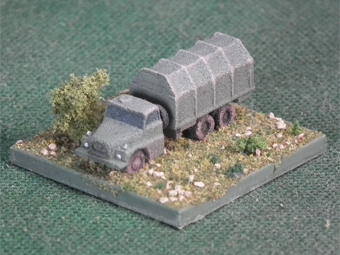
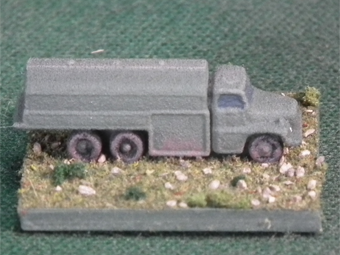
These are two Tatra 148 6x6 truck variants that are also available via my Shapeways shop. On the left, one with a raised tarpaulin or canvas top; on the right, a T-148 CL fuel tanker. The left truck is actually taken from an example that was used by a communications units, a K-20A, and was used to carry cables and cable-laying equipment. The fuel tanker model is part of my 3rd Division's 13th Chemical Protection Battalion, carrying extra fuel for the decontamination vehicles.
The T-148 was introduced in 1972, and was externally very similar to the T-138. It differed mostly in having a more powerful engine, and improvements underneath to further enhance in its off-road handling. More than 100,000 were produced, over twice as many as the T-138 model; it was a great sales success, with over half being exported. Production ended in 1982 as its rather different successor the T-815 was introduced in 1983. Like the T-138, the T-148 formed the basis of a range of specialist vehicles.
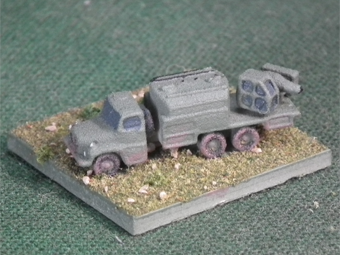
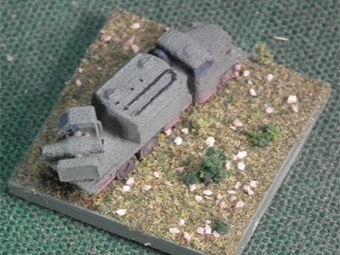
This is one such specialist vehicle, again, available at my my Shapeways shop. It's a TZ-74 decontamination vehicle; this one is serving with my 3rd Division's 13th Chemical Protection Battalion. As with my other Shapewys gear (to date), it's done in the cheapest nylon-12 plastic, but the next ones I order will be in the (slightly) more expensive "polished" version.
These vehicles were introduced in 1975, and mounted an aircraft jet engine of the back (an M-701, which was used to power the Aero L-29 Delfjin; discontinued in 1974). The jet engine was used to heat the exterior of any armoured vehicles subject to radiological or chemical contamination, to hopefully volatilize and/or decompose any toxic agents. Typically a pair would be set up either side of a slowly moving column of vehicles to be treated, so each would do one half of every passing vehicle. Treatment rates were supposed to be vehicles 40 an hour for radiological agents, to a mere 13 an hour for chemical/biological agents. As a chemist by profession, I've always wondered about the efficacy of these decontamination procedures - it seems a bit "heat and hope" to me...
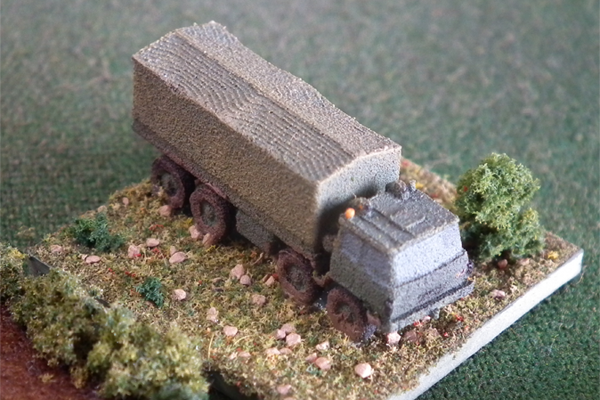
This is a Tatra 815 VVN, an 8 x 8 truck that went into full production from 1983 as a successor to the T-813 "Kolos"; the T-815 range has been updated several times since, and these days is also produced under licence in India. This is another of my Shapeways models; in this particular model, "stepping" on the top of the tarpaulin can be seen due to the way the plastic is printed: layer by layer. When this becomes visible seems to be semi-random, depending on exactly how the printing machine is oriented, I think. The more expensive "detail" plastics don't suffer from this problem, I understand, but I can't afford them...
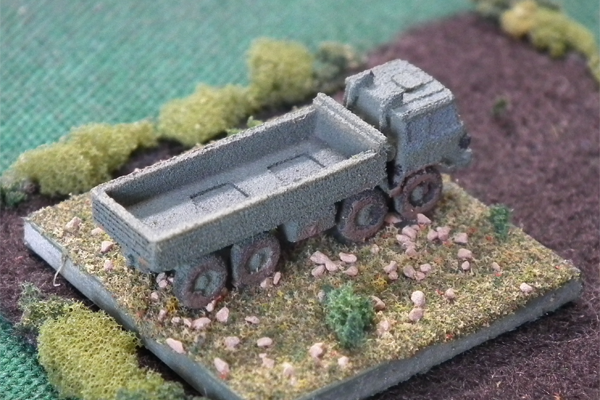
Above is another of my Shapeways T-815 variants. The T-815 series prototypes were developed in the 1970s, and like other Tatra trucks, feature a tubular backbone and split swinging axles for excellent off-road performance; a smaller 4 x 4 version of the T-815 driven by Karel Loprias won the truck category in the Paris-Dakar rally six times starting from 1988. This model shows the standard 8 x 8 truck without its tarpaulin frame erected, revealing the planking surrounding the deck. Despite being printed in the cheapest & grainiest plastic, the "planking" details are still (just) visible.
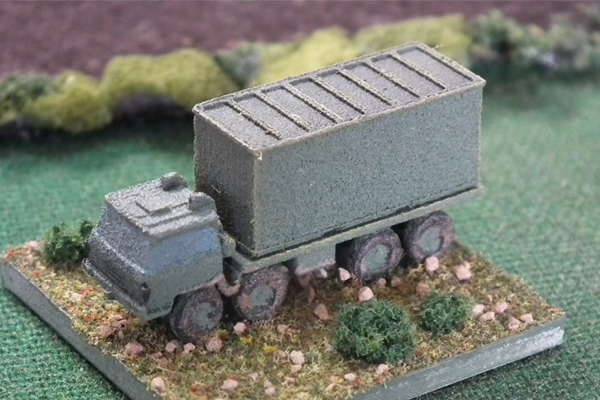
By the mid-1980s, containerization had reached even the Czechoslovakian military: adding a standard 20' ISO-1C container to a flatbed T-815 VVN produces the Tatra 815 VPR9 NK, able to get a container almost anywhere. As can be seen from the picture above, the vehicle is rather tall due to the larger diameter of the wheels of a T-815 VPR compared to a standard road vehicle container carrier; production appears to have been limited to the period from 1985 to 1987. From 1989 to 1991, a smaller 6 x 6 version, the T-815 PR2 NK, was produced.
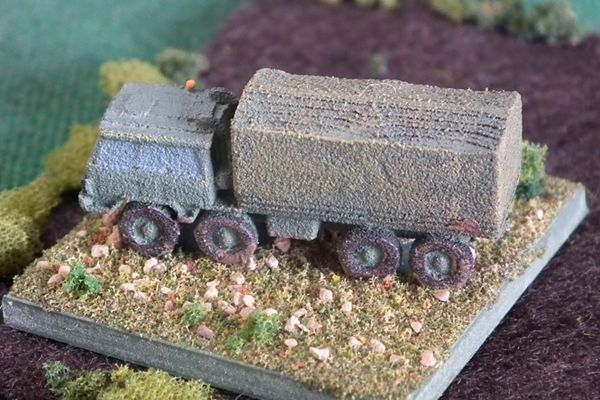
This is a Tatra 815 VT. The T-815 VVN looks like a standard truck, so long as you look only at the cab; whereas the VT version more closely looks like its predecessor the Tatra 813 "Kolos", because of its extended cab. Limited numbers were available from at least 1981, with greater numbers being produced from 1983. This picture shows another of my Shapeways models, and this particular example has some "stepping" printing problems evident at the tarpaulin top.
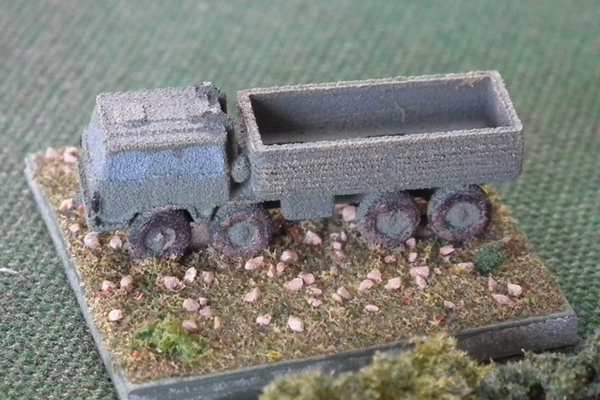
Above is the other of my Shapeways T-815 VT models, this one without a tarpaulin over the rear deck. The T-815 VT model was produced solely in an 8 x 8 format, because it was intended as a dedicated artillery tractor. The extended cab was there to accommodate the crew in a more comfortable fashion than riding in the back along with all the shells and what-not. The vehicle had a weight of nearly 16 tons (nearly 2 tons more than the T-813), could carry 10 more tons (including the crew), while towing up to 70 tons, which means it could easily tow a tank on, e.g. a P-50N tank-transporter trailer.
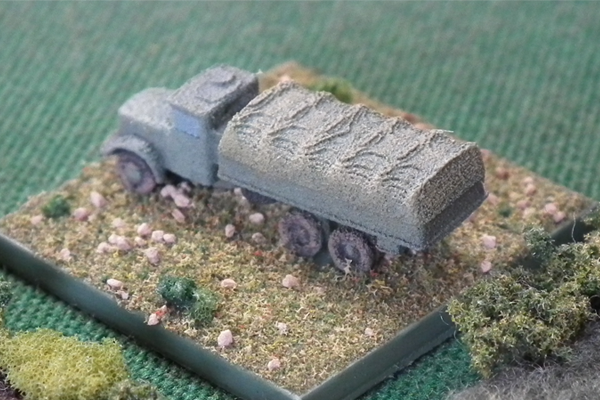
Shown above is a Tatra 111; another of my Shapewaysmodels. The Tatra 111 range of 6 x 6 trucks was first produced in 1942, at the behest of the occupying German army, and is thus suitable for use by gamers modelling the Wehrmacht. The truck's designer was imprisoned by the Czechoslovakians after WW2 for collaborating with the enemy, and he refused to do any work for Tatra (his son designed the modern Pinzgauer). Tatra kept on producing the T-111 until 1962, when it were replaced by the T-138 series, by which date the T-111's decidedly old-fashioned cab had been updated (this model depicts the older style). This particular model shows some fairly severe "stepping" in the printed plastic, unfortunately.

Back to my photos top page.